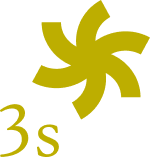Higher Vocational Education and Training in Austria — The Challenge of Classification
Establishing “Higher Vocational Education and Training” (Higher VET) — providing vocational qualifications at higher levels outside higher education — as an independent education segment also requires a clear systematisation of an area that is characterised by the diversity of offers and providers. To make HBB training and qualifications more visible and to anchor them in national and international education statistics, an appropriate classification is needed. Central to this is the International Standard Classification of Education (ISCED), which facilitates the international comparison of educational qualifications.
The focus of the study now published, which was commissioned by the Federal Ministry of Labour and Economic Affairs and prepared by Kurt Schmid (ibw) and Karin Luomi-Messerer (3s), is the question of which criteria are required by ISCED in order to classify training and qualifications in Higher VET appropriately and completely. Particular challenges arise from the fact that some (future) programmes and qualifications in Higher VET belong to the non-formal education sector. The study analyses which framing and which data and information quality both formal and non-formal Higher VET must have in order to be classified in ISCED. A look at the classification procedures and approaches in countries with already established Higher VET, such as Switzerland, Germany and France, complements the national findings with valuable insights into design and implementation options.

Contact: Karin Luomi-Messerer
Client: Bundesministeriums für Arbeit und Wirtschaft (BMAW)

